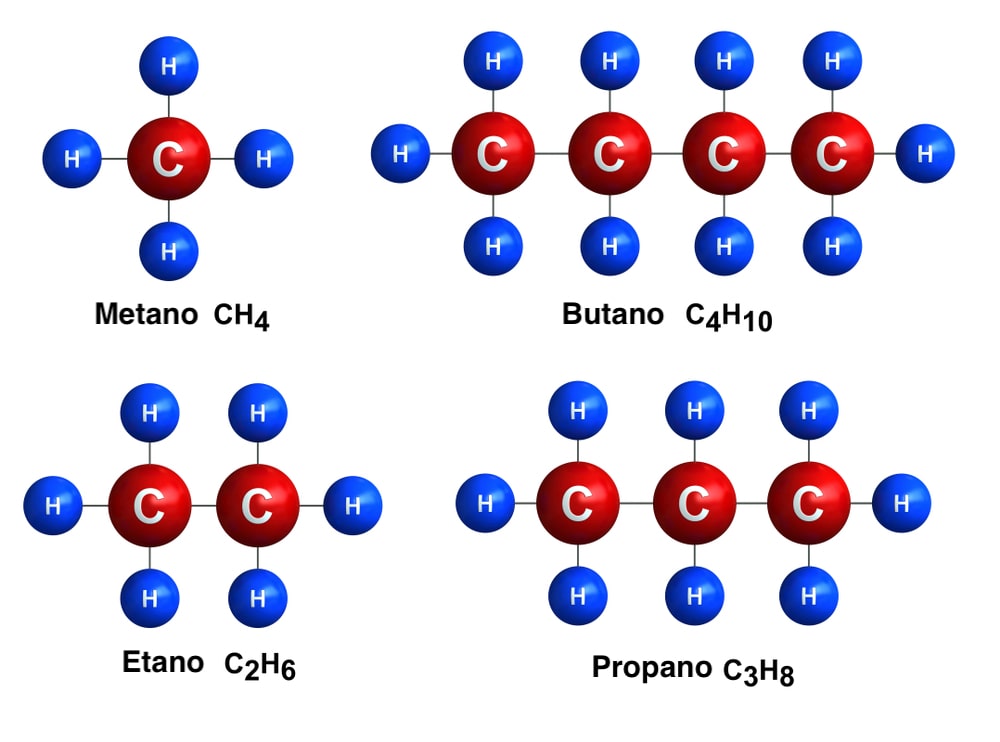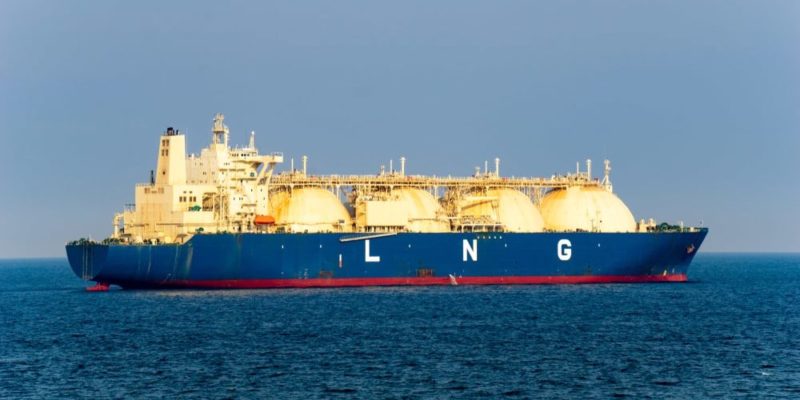We explain what natural gas is, its composition, uses and other characteristics. In addition, its environmental impact and natural reserves.

What is natural gas?
natural gas It is a highly flammable gaseous hydrocarbon the result of a mixture of light gases of natural origin, mostly alkanes. It is one of the most exploited fuels in the world, extracted from the subsoil in deposits similar to (and sometimes even in the same place) as oil tankers.
Its origin is geological such as oil: diverse organic matter of plant and animal origin that was trapped for millions of years in the subsoil, subjected to conditions of intense heat and pressure. Thus, the chemical energy contained in the matter is transferred to the gas, making it highly energetic.
Its discovery dates back to 6000 to 2000 years before our era in the territory of what is now Iran, and in the Baku region of what is now Azerbaijan. In fact, the first natural gas leaks, possibly accidentally ignited by lightning, gave rise to the “eternal fires” worshiped in ancient Persian religions.
However, It was in ancient China that the first extraction well was dug of this resource, about 150 meters deep; a titanic task carried out with bamboo tools and primitive drills around 211 BC c.
Natural gas is a fossil fuel and therefore It is a non-renewable natural resource of our planet.
Composition of natural gas

Natural gas is a mixture of hydrocarbons. This composed mainly of methane (CH4) and ethane (C2h6) although it may also contain quantities of light gases such as butane (C4h10) and propane (C3h8), especially when it is diluted in oil (that is, in the same field, the so-called “associated natural gas”).
In addition, it may contain traces of other compounds and elements, such as carbon dioxide, nitrogen, hydrogen sulfide or helium.
Natural gas has a composition similar to that of biogas, generated by the anaerobic digestion of organic matter by microorganisms. However, it is much more powerful than this.
Characteristics of natural gas

Natural gas has the following characteristics:
- It is from fossil origin (organic) and is accumulated in underground deposits.
- It is composed of a gaseous mixture of light hydrocarbons like saturated paraffins.
- Is highly flammable potentially toxic and very versatile in its use.
- It is usually lavatory once the sulfur residues have been eliminated, so some trace of mercaptans is usually added later to give it a characteristic smell and to be able to identify its presence.
Natural gas reserves
Although its extraction began massively in the 19th century, current estimates in 2017 (according to the British Petroleum company) suggested that There are 193.5 billion cubic meters of natural gas left in the world.
According to these estimates, current production can be sustained consecutively for 55 more years. Most of the reserves are located in the Middle East (43%, especially in Iran and Qatar) and Central Asia (31%, especially in Russia and Turkmenistan).
Uses and applications of natural gas

Given its very high caloric performance and versatile nature, natural gas is used today for:
- Heating urban and ignition of boilers or industrial ovens.
- Electricity production in high-performance power plants.
- Vehicle fuel in the form of liquefied natural gas (LNG) or compressed natural gas (CNG), especially in public or long-distance transport.
- Manufacturing of chemical materials such as pigments, fertilizers, preservatives, additives, or chemical compounds to feed the chemical and pharmaceutical industry.
Advantages and disadvantages of natural gas

On the one hand, the advantages of natural gas have to do with its relative abundance: It is much easier to get than oil and much easier to extract, too.
On the other hand, it is easy to transport once liquefied, with a low risk of accidents if appropriate measures are taken, both by land and by sea. Furthermore, for its huge caloric yield and its lower emission of greenhouse gases such as CO2 (compared to other fossil hydrocarbons) natural gas is a very advantageous fuel.
However, although it pollutes less than oil or other hydrocarbons, it is also polluting. Therefore, one of his disadvantages is that the CO2 resulting from its combustion contributes to the greenhouse effect and global warming, changing the climate and threatening the sustainability of life on the planet as we know it.
On the other hand, Its caloric yield is not as high as that of oil nor is it a source of so many usable chemical elements, since it is a much lighter type of hydrocarbons.
Environmental impact of natural gas
Like any other fossil fuel, the exploitation of natural gas has a considerable ecological cost. On the one hand, Its extraction requires excavation and earth removal which also has a local geological and erosive impact.
Furthermore, leaks of gases such as methane in gas fields represent a strong and dangerous air pollutant 23 times more harmful than CO2 for the greenhouse effect.
References
- “Natural gas” on Wikipedia.
- “What natural gas is and where it comes from” in Rincón Educativo.
- “What is natural gas?” at EcoPetrol (Colombia).
- “Natural gas explained” in S. Energy Information Administration (USA).
- “Natural gas” in The Encyclopaedia Britannica.





